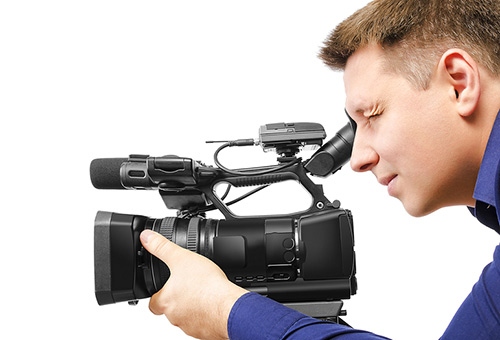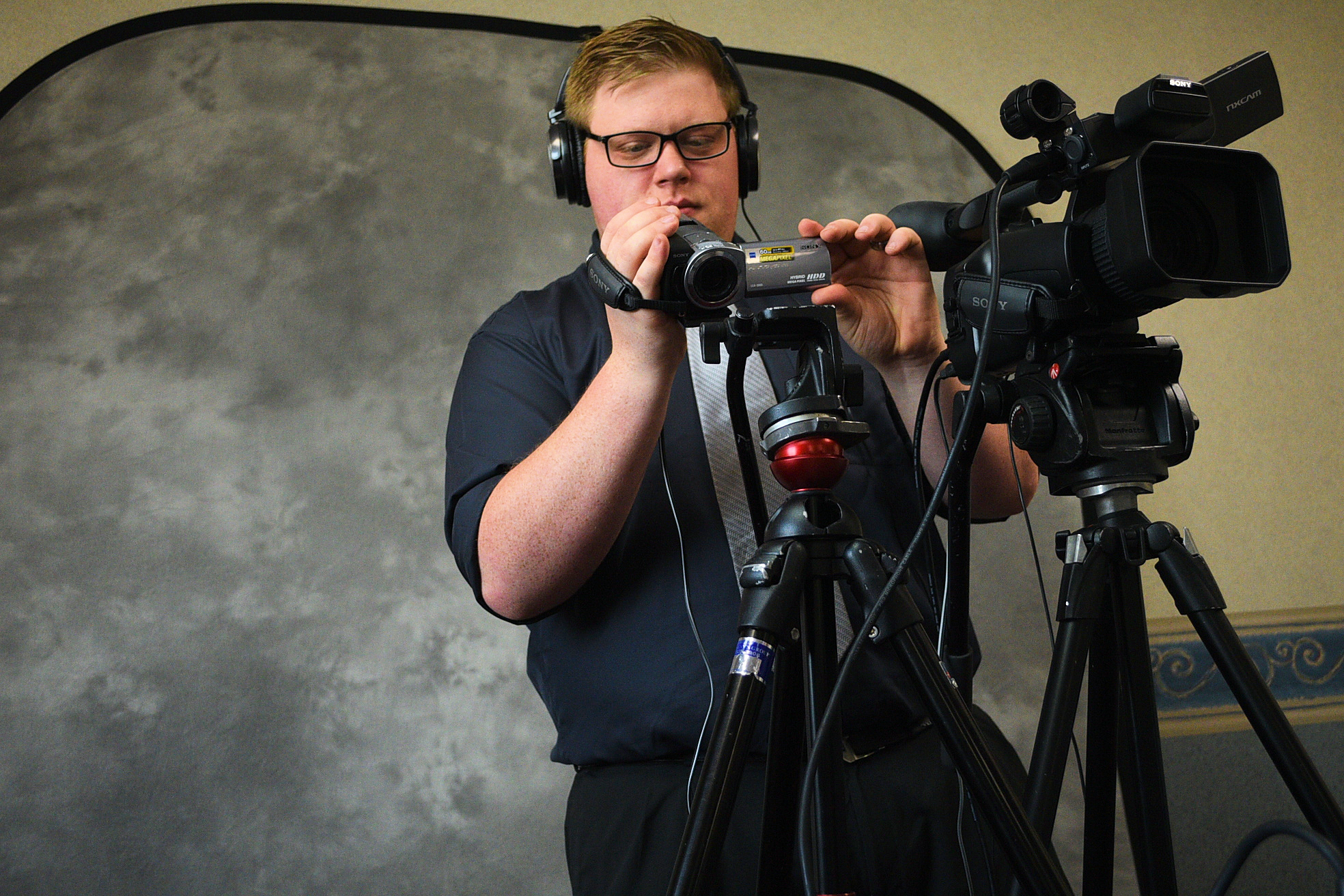Legal Videography: Ensuring Precision and Clearness in Legal Testimonies
Legal Videography: Ensuring Precision and Clearness in Legal Testimonies
Blog Article
Trick Advantages of Making Use Of Videography in Legal Situations
The assimilation of videography in lawful instances provides a series of critical benefits that can dramatically affect trial results. By boosting proof discussion and improving witness credibility, videography offers as an effective tool to engage jurors and share complicated narratives efficiently. This tool maintains essential statements, ensuring that crucial details is not shed to memory decay. As the lawful landscape continues to progress, the effects of leveraging videography in trial setups quality better examination, especially in understanding how these advantages convert into substantial results in the courtroom.
Enhanced Evidence Presentation
Improved evidence presentation through videography has actually reinvented the means legal instances are suggested and comprehended in the court room. By incorporating top quality video recordings into legal proceedings, attorneys can convey complex details in a much more appealing and comprehensible manner - Legal Videography. Videography enables the visualization of proof, making it simpler for courts and courts to grasp the context and importance of the offered realities
In enhancement to boosting clarity, videography can additionally catch real-time events, providing a genuine representation of occurrences important to a case. This immediacy can substantially impact the persuasiveness of an argument, as aesthetic evidence frequently resonates more highly than created documentation. Moreover, video evidence can include critical elements such as body language, intonation, and environmental factors, all of which contribute to a much more holistic understanding of the instance.
The use of videography also allows for efficient organization of evidence, allowing lawyers to provide their debates in a sensible and systematic fashion. By purposefully including video clip right into their presentations, attorneys can assist in a much more effective analysis of the evidence, inevitably bring about educated decision-making by the court. The transformative power of videography in legal contexts is both vital and undeniable.
Improved Witness Integrity

Video evidence can also mitigate possible predispositions that may occur from the witness's appearance or quirks in a live setting. By providing a well-produced video, lawful groups can make sure that the emphasis stays on the content of the testament as opposed to peripheral aspects that may weaken integrity. The opportunity to evaluate documented declarations can strengthen witness consistency, as inconsistencies can be attended to prior to trial, leading to more dependable testimonies.
Moreover, the permanence of videography supplies a protect versus memory degeneration or false impression gradually. By having a clear, proven account of witness statements, legal specialists can construct a stronger situation, enhancing the total reliability of the witness and, subsequently, the honesty of the judicial process.
Engaging Court Experience
Videography can considerably raise the jury's interaction throughout lawful proceedings. By including top notch video presentations, lawful teams can maintain the attention and record of jurors, changing complicated details into visually engaging stories. This involvement is important, as jurors often battle to absorb dense legal terminology and elaborate details offered entirely through conventional methods.
Video clip evidence enables jurors to witness occasions as they unfolded, providing context that composed statements might lack. Making use of dynamic visuals can stimulate psychological reactions, making the situation extra remarkable and relatable. Monitoring footage or reenactments can illustrate essential moments, enabling jurors to imagine the proof in a compelling fashion.
Moreover, videography can assist in a much more interactive experience. Jurors can see and listen to witnesses, which includes a layer of authenticity and immediacy that written records can not duplicate. This multi-sensory technique cultivates much deeper comprehension and retention of the provided material.

Effective Situation Narration
An engaging narrative is essential for reliable instance narration in the court. Videography functions as an effective tool to offer this narrative and craft, engaging the jury and boosting their understanding of the case. By visually illustrating the occasions leading to the lawful dispute, videography allows attorneys to highlight complicated circumstances in a clear and relatable manner. This storytelling approach can stimulate psychological reactions and foster compassion, creating a deeper link in between the court and the case.
Integrating aspects such as witness interviews, animations, and restorations, videography offers a multi-dimensional perspective that standard techniques can not achieve - Legal Videography. This visual depiction not only aids in clarifying realities yet additionally assists jurors maintain critical details. The vibrant nature of video can break down obstacles of comprehension, making complex information a lot more obtainable.
Eventually, effective instance storytelling with videography transforms the court room experience, enabling lawyers to provide their arguments in a engaging and convincing manner. By utilizing the power of visuals, legal specialists can substantially improve their capability to connect important narratives and achieve positive results for their customers.
Preservation of Testimonies
Maintaining testaments is a crucial facet of lawful proceedings, as the accuracy and stability of witness declarations can dramatically affect the outcome of a situation. Videography functions as a reliable tool hereof, guaranteeing that testimonies More about the author are recorded in their original context, therefore lessening the risk of false impression or distortion over time.
By capturing spoken and non-verbal cues, videography offers a detailed account of witness declarations, which can be indispensable during trial process. This technique not only records the material of the testimony but additionally maintains the behavior and emotional reactions of witnesses, offering courts a richer understanding of the testament's reputation and relevance.
In addition, the usage of videography see this here facilitates a more trusted review of testaments throughout pre-trial preparations or post-trial evaluations. Attorneys can revisit recorded statements to clear up information, assess incongruities, or create techniques for cross-examination.
In significance, videography improves the conservation of testaments, fostering a transparent lawful procedure that can lead to more equitable end results. By guarding the honesty of witness statements, lawful practitioners can much better support for their clients and maintain the principles of justice.

Final Thought
To conclude, the integration of videography in lawful cases substantially enhances the discussion of proof, boosts witness trustworthiness, and astounds juries through involving visual web content. This medium assists in effective storytelling, enabling lawyers to convey narratives that resonate deeply with decision-makers. Additionally, videography acts as an irreversible record of statements, reducing the risk of memory decay. Jointly, these benefits emphasize the essential role of videography in modern-day lawful techniques, inevitably contributing to even more educated judicial end results.
The combination of videography in right here legal instances provides a variety of critical advantages that can dramatically affect test outcomes.Enhanced evidence discussion through videography has actually transformed the method lawful instances are said and recognized in the courtroom.Videography can dramatically elevate the jury's involvement during legal proceedings. By visually showing the events leading to the legal disagreement, videography allows attorneys to show complicated circumstances in a relatable and clear way.In conclusion, the integration of videography in lawful situations substantially improves the discussion of evidence, strengthens witness reputation, and astounds juries through engaging visual web content.
Report this page